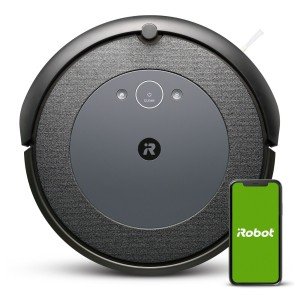The Rise of Robot Vacuum Cleaners in Industrial Settings
Recently, the landscape of industrial cleaning has experienced a considerable transformation with the intro of robot vacuum. These automated gadgets are not just a novelty for homes; they have actually gotten traction in warehouses, manufacturing plants, and other industrial environments. automatic floor cleaner out the functionality, advantages, and factors to consider of robot vacuum within the industrial context, while answering some regularly asked questions.
What are Robot Vacuum Cleaners?
Robot vacuum are automated cleaning devices equipped with innovative sensors and technology that enable them to browse around spaces, detect dirt, and vacuum surface areas without direct human intervention. In industrial settings, they are designed to deal with a range of debris types, help with routine cleaning schedules, and enhance overall functional efficiency.
Table 1: Key Features of Industrial Robot Vacuum Cleaners
| Feature | Description |
|---|---|
| Navigation | Utilizes LiDAR or camera-based navigation for exact mapping. |
| Size and Design | Compact and robust style to fit in tight spaces and endure tough environments. |
| Self-Charging | Instantly go back to its docking station for recharging. |
| Dustbin Capacity | Bigger dustbin suited for industrial particles sizes and volumes. |
| Shows | Can be programmed for scheduling and specific cleaning tasks. |
| Data Collecting | Geared up with sensors to collect data for upkeep and cleaning analysis. |
Advantages of Robot Vacuum Cleaners in Industrial Settings
The adoption of robot vacuum cleaners features a myriad of benefits:
Increased Efficiency:
- 24/7 Operation: Unlike human cleaners, robots can run around the clock, adding to continuous cleanliness without downtime.
- Time-Saving: Automated cleaning allows staff members to concentrate on core jobs instead of cleaning tasks.
Expense Savings:
- Labor Costs: Maintaining a robot vacuum can decrease the need for a large cleaning staff, decreasing total labor expenses.
- Operational Efficiency: With enhanced cleanliness and reduced downtime due to maintenance concerns, companies can minimize functional expenses.
Boosted Safety:
- Reduced Risk: By minimizing the human involvement in harmful cleaning environments, the danger of mishaps is minimized.
- Constant Cleaning: Robot vacuums make sure that locations are regularly cleaned, minimizing slip dangers and unhealthy environments.
Increased Flexibility:
- Customizable Cleaning Routes: These devices can be configured to clean particular locations or floorings, adjusting to changing industrial designs.
- Variety of Surfaces: Industrial robot vacuums can manage numerous flooring types, from concrete to tiles, making them flexible.
Environmental Impact:
- Sustainable Cleaning Solutions: Many models use very little water and eco-friendly cleaning services, assisting in business sustainability efforts.
Table 2: Industrial Applications of Robot Vacuum Cleaners
| Industry | Application |
|---|---|
| Manufacturing | Cleaning assembly line and assembly areas. |
| Warehousing | Maintaining clean and orderly storage areas. |
| Food Processing | Making sure tidiness in delicate areas to satisfy hygiene requirements. |
| Pharmaceuticals | Preserving ultra-clean environments for production. |
| Logistics and Distribution | Keeping paths clear for efficient operation. |
Obstacles and Considerations
While the advantages are considerable, services ought to likewise think about a number of difficulties:
- Initial Investment: The in advance expenses of acquiring industrial robot vacuum cleaners can be considerable, though long-term savings may offset this expense.
- Repair and maintenance: Regular maintenance is important to keep the robotic systems operating optimally, and repairs can incur additional costs.
- Integration: Businesses may need to incorporate these devices into existing workflows, which can require time and change.
- Training and Support: Staff might require training to efficiently handle these machines, particularly when repairing or programming is required.
Frequently Asked Questions About Robot Vacuum Cleaners in Industrial Settings
1. Just how much do industrial robot vacuum cost?
The expense can vary from a couple of thousand to tens of thousands of dollars, depending upon requirements, features, and brand name.
2. What types of surface areas can they clean up?
Robot vacuum cleaners are suitable for different surface areas consisting of carpets, tiles, concrete, and even some wood floors.
3. How do they navigate complicated industrial environments?
Many industrial robot vacuums make use of advanced navigation systems like LiDAR, electronic cameras, and sensors to draw up and adapt to their environments for effective cleaning.
4. Can they clean up large areas without human intervention?
Yes, industrial robot vacuums are developed to tidy comprehensive areas with pre-programmed paths and schedules, efficiently running autonomously.
5. Are these robots ecologically friendly?
Many designs prioritize efficiency and minimize water usage, making them a more eco-friendly cleaning option compared to standard techniques.
The intro of robot vacuum cleaners into industrial environments represents an amazing advancement in cleaning technology. With their capability to enhance performance, decrease labor costs, and maintain security, these automated systems are paving the method for smarter and cleaner industrial operations. While difficulties may exist, the long-term benefits and technological developments are motivating for industries looking for to improve their cleaning procedures. As innovation continues to develop, we can expect further innovations in robot vacuum that will change industrial cleaning practices much more.

